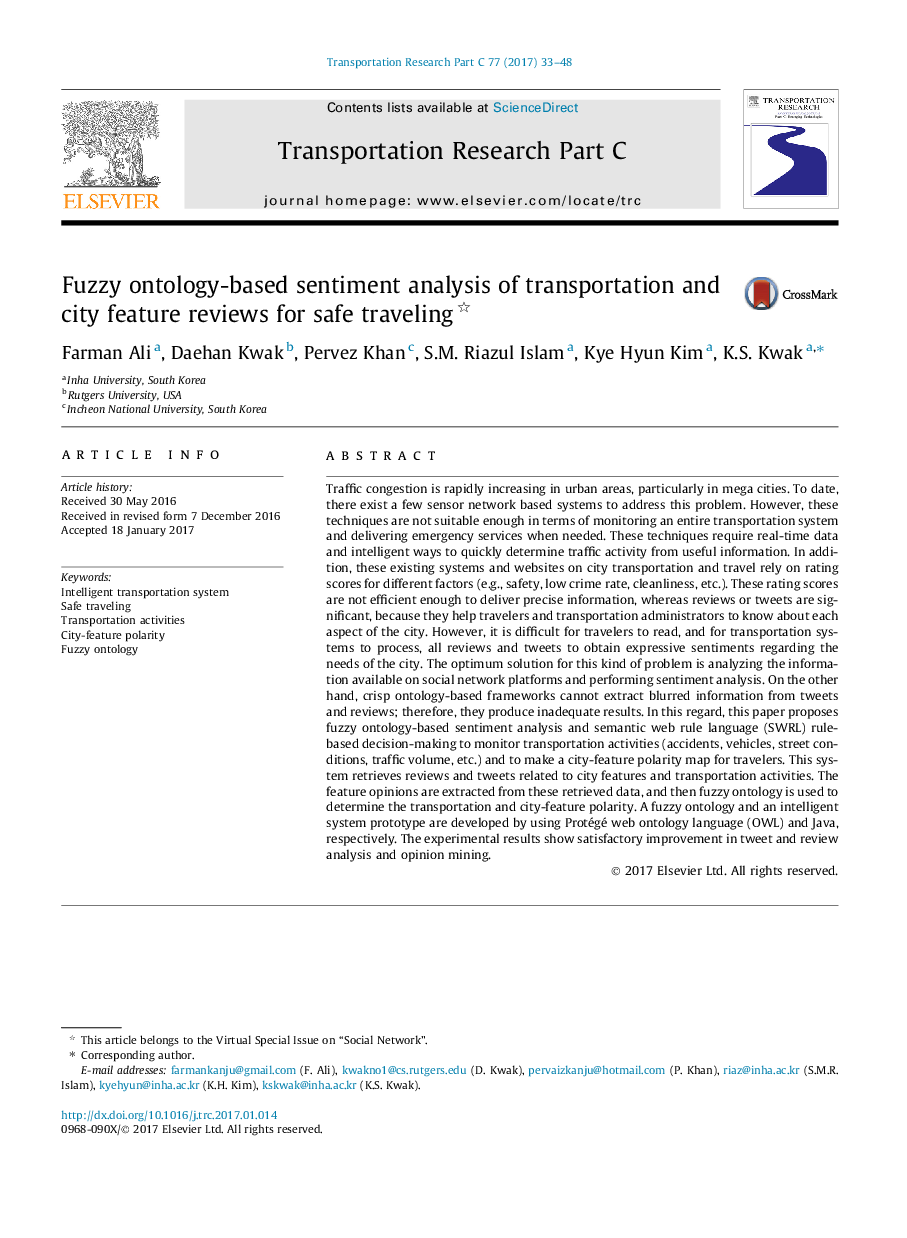| Article ID | Journal | Published Year | Pages | File Type |
|---|---|---|---|---|
| 4968618 | Transportation Research Part C: Emerging Technologies | 2017 | 16 Pages |
Abstract
Traffic congestion is rapidly increasing in urban areas, particularly in mega cities. To date, there exist a few sensor network based systems to address this problem. However, these techniques are not suitable enough in terms of monitoring an entire transportation system and delivering emergency services when needed. These techniques require real-time data and intelligent ways to quickly determine traffic activity from useful information. In addition, these existing systems and websites on city transportation and travel rely on rating scores for different factors (e.g., safety, low crime rate, cleanliness, etc.). These rating scores are not efficient enough to deliver precise information, whereas reviews or tweets are significant, because they help travelers and transportation administrators to know about each aspect of the city. However, it is difficult for travelers to read, and for transportation systems to process, all reviews and tweets to obtain expressive sentiments regarding the needs of the city. The optimum solution for this kind of problem is analyzing the information available on social network platforms and performing sentiment analysis. On the other hand, crisp ontology-based frameworks cannot extract blurred information from tweets and reviews; therefore, they produce inadequate results. In this regard, this paper proposes fuzzy ontology-based sentiment analysis and semantic web rule language (SWRL) rule-based decision-making to monitor transportation activities (accidents, vehicles, street conditions, traffic volume, etc.) and to make a city-feature polarity map for travelers. This system retrieves reviews and tweets related to city features and transportation activities. The feature opinions are extracted from these retrieved data, and then fuzzy ontology is used to determine the transportation and city-feature polarity. A fuzzy ontology and an intelligent system prototype are developed by using Protégé web ontology language (OWL) and Java, respectively. The experimental results show satisfactory improvement in tweet and review analysis and opinion mining.
Related Topics
Physical Sciences and Engineering
Computer Science
Computer Science Applications
Authors
Farman Ali, Daehan Kwak, Pervez Khan, S.M. Riazul Islam, Kye Hyun Kim, K.S. Kwak,
